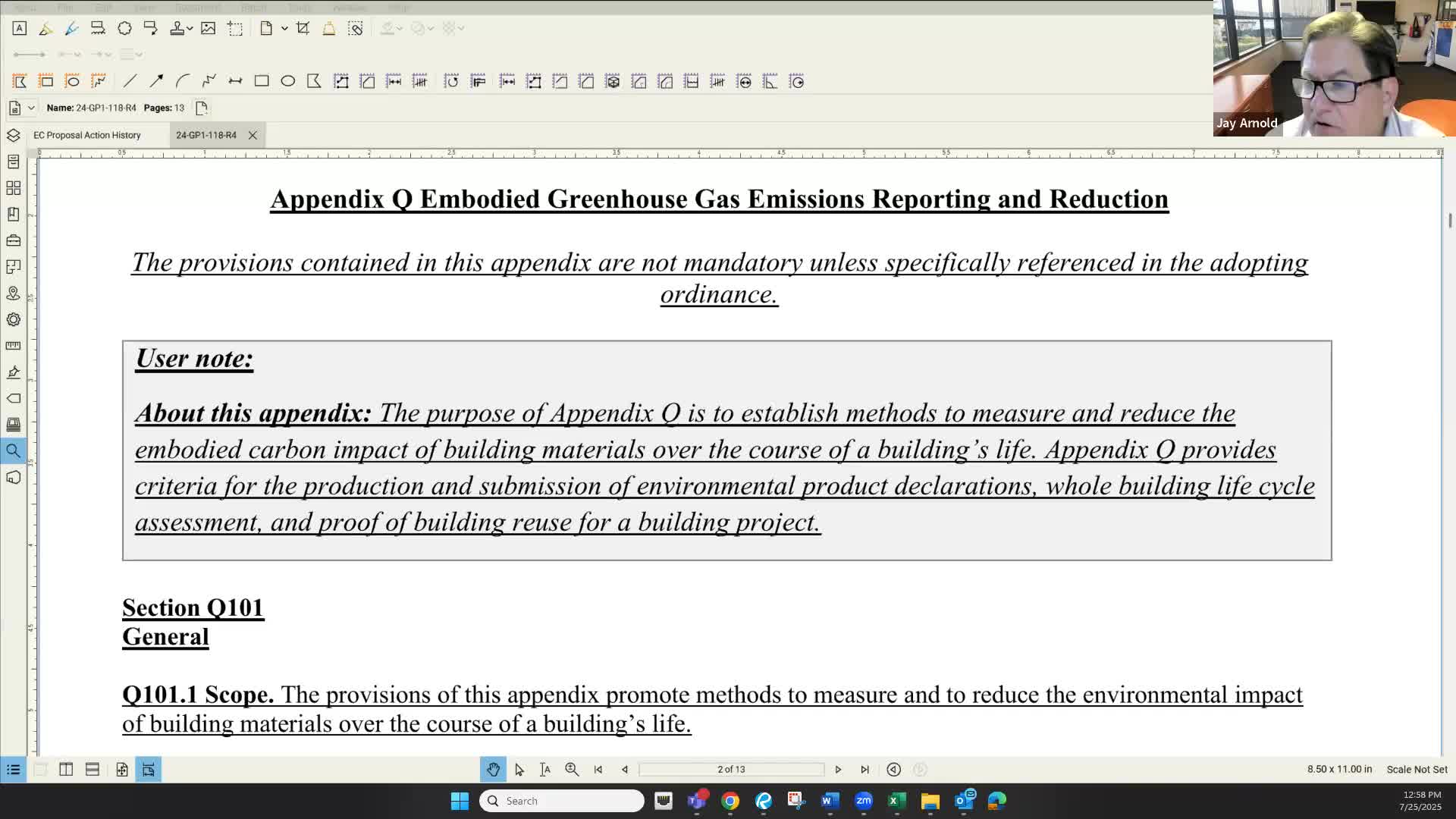Washington Legislators Debate Embodied Carbon Code Proposal Among Industry Concerns
July 31, 2025 | Building Code Council, Governor's Office - Boards & Commissions, Executive, Washington
This article was created by AI summarizing key points discussed. AI makes mistakes, so for full details and context, please refer to the video of the full meeting. Please report any errors so we can fix them. Report an error »

A significant discussion on embodied carbon regulations took center stage at the SBCC Council Meeting on July 25, 2025, as stakeholders debated the implications of proposed changes to the building code. The meeting highlighted a new proposal aimed at addressing concerns about carbon emissions in construction, particularly for new buildings and large additions.
The proposal, presented by a representative involved in the energy code, seeks to streamline regulations by focusing on buildings over 50,000 square feet. It emphasizes a whole building life cycle analysis, which assesses the environmental impact of a building throughout its life. This approach is designed to encourage the construction industry to adopt practices that reduce embodied carbon, a critical factor in meeting Washington's ambitious carbon reduction goals.
Key features of the proposal include two pathways for compliance: a carbon cap and a relative reduction model. The carbon cap sets a limit on emissions per square meter, while the relative reduction allows builders to demonstrate that their projects are equal to or better than a baseline building. The aim is to foster a culture of sustainability within the industry, making it easier for contractors and architects to integrate these practices into their work.
Public comments during the meeting reflected a mix of support and concern. Some stakeholders expressed the need for a comprehensive understanding of the economic impacts of these regulations, particularly in an import-dependent state like Washington. Others cautioned against delaying progress, arguing that the proposed framework could provide valuable guidance for local governments lacking the resources to develop their own carbon regulations.
The council is expected to continue discussions on this proposal, weighing the potential benefits of reducing embodied carbon against the practical challenges faced by the construction industry. As Washington strives to lead in sustainability, the outcome of these discussions could shape the future of building practices in the state.
The proposal, presented by a representative involved in the energy code, seeks to streamline regulations by focusing on buildings over 50,000 square feet. It emphasizes a whole building life cycle analysis, which assesses the environmental impact of a building throughout its life. This approach is designed to encourage the construction industry to adopt practices that reduce embodied carbon, a critical factor in meeting Washington's ambitious carbon reduction goals.
Key features of the proposal include two pathways for compliance: a carbon cap and a relative reduction model. The carbon cap sets a limit on emissions per square meter, while the relative reduction allows builders to demonstrate that their projects are equal to or better than a baseline building. The aim is to foster a culture of sustainability within the industry, making it easier for contractors and architects to integrate these practices into their work.
Public comments during the meeting reflected a mix of support and concern. Some stakeholders expressed the need for a comprehensive understanding of the economic impacts of these regulations, particularly in an import-dependent state like Washington. Others cautioned against delaying progress, arguing that the proposed framework could provide valuable guidance for local governments lacking the resources to develop their own carbon regulations.
The council is expected to continue discussions on this proposal, weighing the potential benefits of reducing embodied carbon against the practical challenges faced by the construction industry. As Washington strives to lead in sustainability, the outcome of these discussions could shape the future of building practices in the state.
View full meeting
This article is based on a recent meeting—watch the full video and explore the complete transcript for deeper insights into the discussion.
View full meeting
